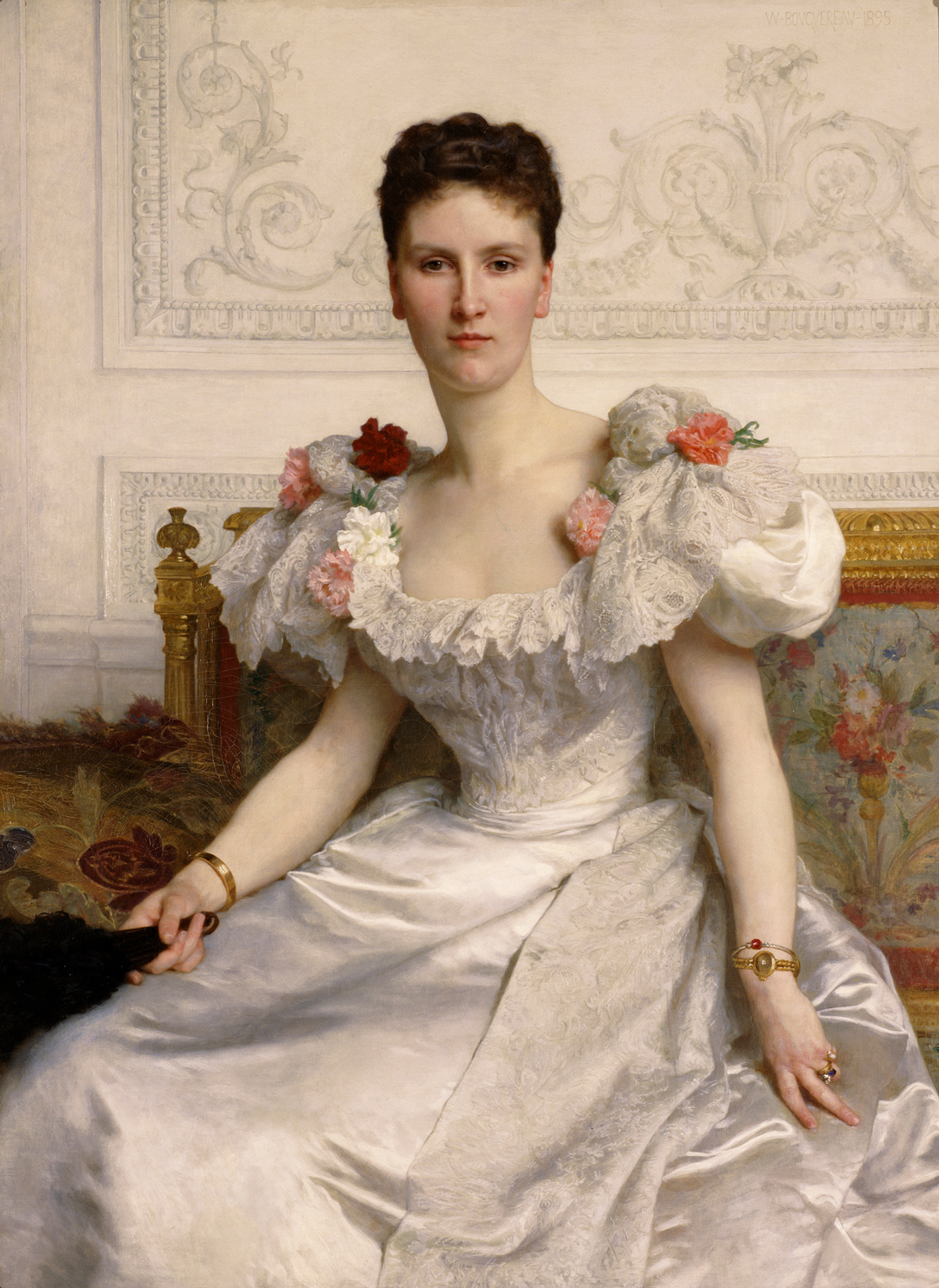Object of the Week: Portrait of Madame la Comtesse de Cambacérès
French painter William Adolphe Bouguereau lived during the last three quarters of the 19th century and was productive as an artist from the 1840s up until his death in 1905. In posterity he’s been remembered—positively by some, negatively by others—for his connection to an academic style of painting, recognizable for its precise forms and traditional subject matter. Top among the most “Bouguereau” of elements would be lifelike representations of the human figure and meticulous handling of paint, both of which are on display in SAM’s Portrait of Madame la Comtesse de Cambacérès, painted late in the artist’s career, in 1895.
What are the arguments against Bouguereau? The developments of modernism around the turn of the 20th century put his techniques and subjects at odds with the avant-garde. Consider: Berthe Morisot’s gesturally painted, impressionistic portrait of Lucie Léon at the Piano that hangs on a nearby wall was painted three years before the Bouguereau. So, many saw in his exacting portrayal of reality a lack of creative effort. What has he added to our perception of the world?
Of course Bouguereau (and his many supporters) had an answer to that. An especially telling anecdote about SAM’s painting survives thanks to journalist Eugene Tardieu, who visited Bouguereau at his studio in 1895, and would publish his memory of the interview in L’Echo de Paris. Receiving Tardieu, Bouguereau gestured toward the recently completed Comtesse:
Here is a portrait which I have just finished . . . but I am still not happy with it! I tell you one must seek beauty; which is what our innovators no longer know how to do. Here’s a person with a turned up nose and a receding chin: if I did a profile, do you think she would be flattered? No, right? You have to take another approach. I did a full-face view . . . this is what I call interpreting nature.1
Surely a commissioned portrait would perfectly exemplify Bouguereau’s lack of creativity, if he was a simple mimic of nature, as some have criticized? He’s been told what to paint, and no doubt prodded by the patron regarding how to paint it. Nonetheless, the artist sees this, like all his paintings, as an opportunity to “interpret.” His creativity might be lost on some, but Bouguereau knew exactly what he was about. His interventions in nature, evidenced in this portrait and across his oeuvre, served to highlight his ideal of beauty. Here, he has composed the scene to present his subject in the best light, rendering her in a frontal view, while demonstrating great technical skill in the delicate rendering of dress and background. I love his concluding comment, that his manipulation of her posture was his way of “interpreting nature.”
The story of Bouguereau’s portrait gives me pause to think: What interventions in nature do we want from our artists? What interventions do we consider creative? Important? Innovative? On those topics: Seeing Nature: Landscape Masterworks from the Paul G. Allen Family Collection offers a truly special chance to study some of the most influential artists in history doing their own interpreting of nature, and a chance for each of us to think on how we’d answer those questions.
–Jeffrey Carlson, SAM Collections Coordinator
